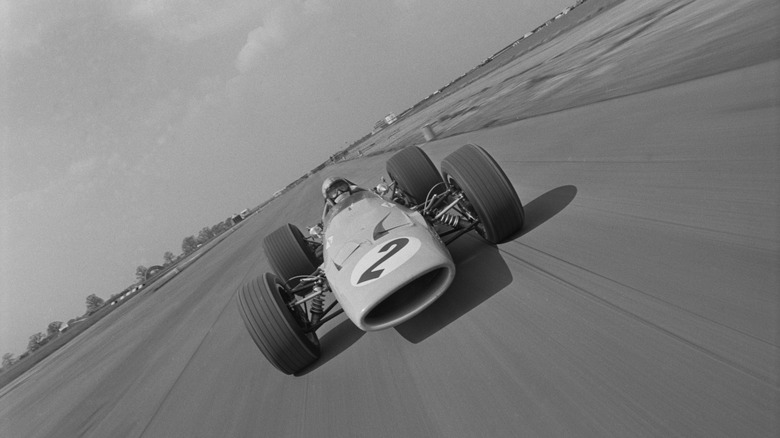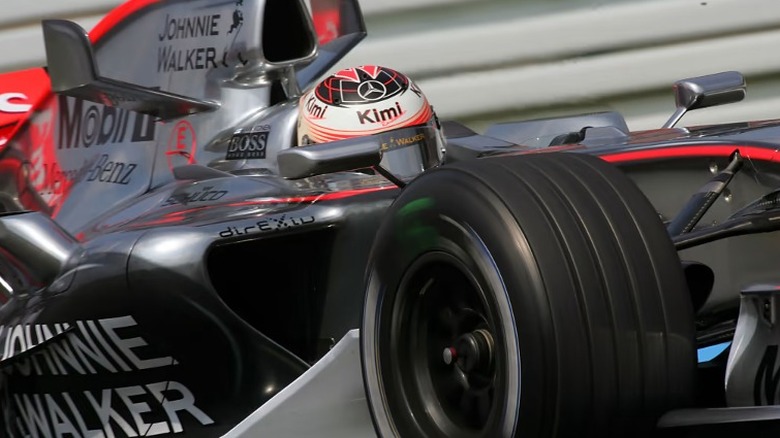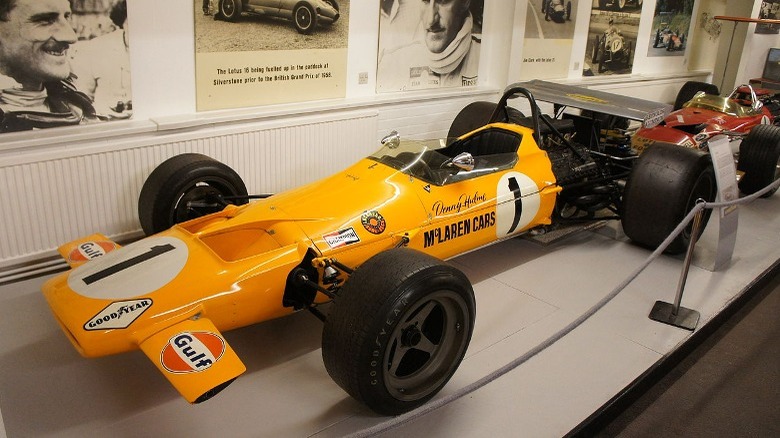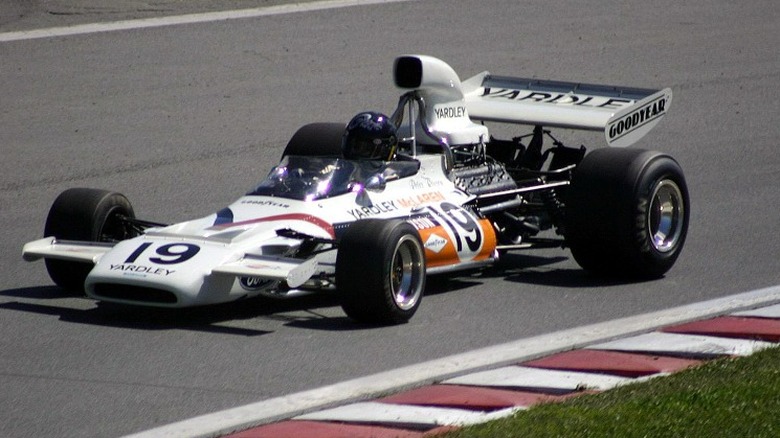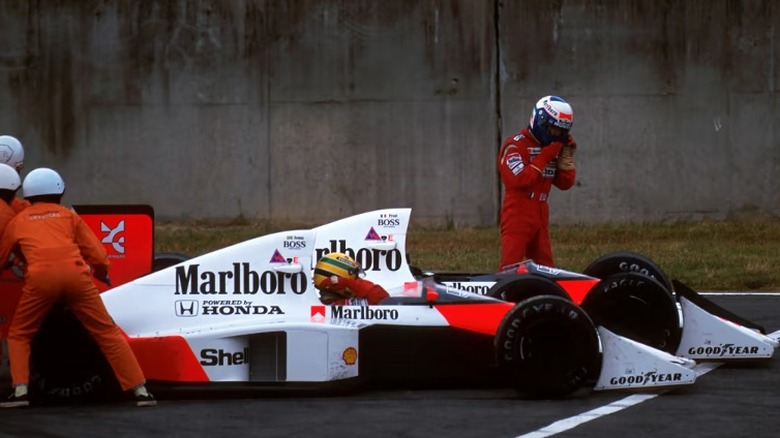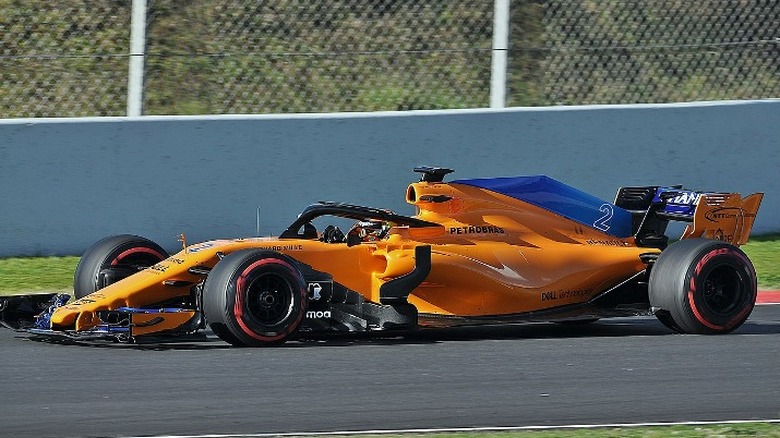The 5 Greatest McLaren Racing Liveries, Ranked
McLaren has enjoyed a legendary run within the Formula 1 circuit. As a team, McLaren has notched 183 first-place finishes since its Freshman outing in 1966, as well as eight total world championships. The current team is made up of Lando Norris and Oscar Piastri, two young and immensely exciting talents on the grid. This is perhaps most evident in the fact that Norris, McLaren's standout driver, is contracted to earn $20 million in the 2023 F1 season (fourth-most of any driver in the sport).
In addition to the electric racers sitting behind the wheel, McLaren has spent an exorbitant amount of time and effort to produce fantastic-looking Formula 1 machines. The current model makes use of all the modern streamlining amenities that feature prominently on every other racer. The livery is something else entirely, though. McLaren is well known for being an orange car, and at present, the orange hues feature prominently on the chassis of each driver's vehicle. Yet, McLaren hasn't always draped their vehicles in this classic orange blaze. In addition to the iconic orange, McLaren liveries have been white, chrome, and even red! A standout that doesn't quite break the top five, but certainly deserves a mention, is the blacked-out racer that hit the circuit in 2015 (the MP4-30). The car brought a mean look to the team, but its new Honda engine simply couldn't stand up to the competition as McLaren clocked the slowest time during the Jerez test to start the season.
5. The silver and chrome of 2006 and 2007 (MP4-21 and -22)
2005 proved to be a monumental year for McLaren. The MP4-20 was the fastest car on the grid that year, but suffered from reliability issues. As a result, the team and primary point scorer Kimi Raikkonen each just missed out on lifting the Constructors' and Drivers' trophies at the end of the season. The silver livery that flashed around the track that year returned in 2006 and 2007's MP4-21 (and -22). In 2006 the chrome scheme was updated, and the result was a massively handsome race car that included red dayglo stripes that ran across the body from front to back.
2007 improved on this livery pattern again, with the addition of more red highlights to go along with the Vodafone sponsorship that was brought into the fold. The tail and nose wing assembly (a $200,000 part!) both received these red splashes along with the Vodafone branding to complete the silver and chrome speedster. 2007 is also the year a rookie by the name of Lewis Hamilton joined Formula 1 as a driver for McLaren. But even with all this going for the team, McLaren was at the center of a spying scandal that ultimately put a massive dampener on the season and stripped the drivers of Constructors' Cup points, and levied a huge fine against the organization.
4. The 1968 turn to orange (M7A)
McLaren Orange was born alongside the titular figurehead of the brand himself. In 1968, Bruce McLaren drove his own Formula 1 racer, decked out in a full coating of orange livery paint. The Can-Am driven by Bruce McLaren in 1967 utilized a papaya orange shade, and this was blanketed onto the 1968 model that he would race. Goodwood's Simon Ostler writes that McLaren's '68 M7A "was painted in the colour that McLaren would become known for... It's a shame that this colour was lost to the sport for quite so long, although the decision to bring papaya back will forever be one of the best ever made when it comes to F1 liveries."
Paired with the classic, circular number paint on the nose of the vehicle and raised rear fin, the orange M7A is a classic racing vehicle, to be sure. That year, McLaren piloted the car to a win in Belgium that notched the team's first Grand Prix victory. He would be killed in an accident at the Goodwood circuit just two years later while testing a vehicle. This makes the orange livery both one of classic styling and of reverence.
[Featured image by Chris Eaton via Wikimedia Commons | Cropped and scaled | CC BY-SA 3.0]
3. M19C: 1972's Yardley white
In 1972, McLaren rolled out a Formula 1 racer that was adorned with the logos of its first major sponsor, Yardley of London. Yardley is a personal hygiene and care brand that's one of the oldest fragrance and cosmetics producers in the world (founded in 1770). The company's name was splashed across the body and tailfin of the M19C car (as well as at the tip of the vehicle's nose). Along with the Yardley name, the vehicle took on a white paint job to stand in stark contrast to the black lettering.
However, McLaren didn't completely do away with the papaya style, opting to push it down along the sides of the driver's central position. The car is short and stout, and with the bulge around the sides where the orange flair can be seen, the color adds a zest to the vehicle's otherwise white shade to make it a unique sight on the track. The car takes on a stripped-down look, but along with the livery change came a new appetite for winning (a much-needed infusion of energy after the death of Bruce McLaren in 1970).
[Featured image by TMWolf via Wikimedia Commons | Cropped and scaled | CC BY-SA 2.0]
2. 1988's MP4/4: White and red
The 1980s and 1990s were a time of immense success for the racing outfit. 1988 offers perhaps the best iteration of this time period's white and red livery. The vehicle is outfitted with Marlboro logos across the chassis, and in the later '80s years, the team produced a primarily white-bodied F1 car rather than one that featured split colors across the whole chassis. This made the vehicle stand out prominently among the field of competitors, and combined with the dominance of McLaren drivers Ayrton Senna and Alain Prost in 1988. Senna won the title in '88 after Prost had come out on top in 1985 and '86. Prost would then win again in 1989 and retain the title of top Formula 1 racer for the next two seasons.
The immense success that came along with the red and white livery helps crystallize the color scheme as an icon within the team's triumphant racing history. The MP4/4 was a true winner through and through, and the clean lines that accompanied the red and white paint job are a sight to behold. It's certainly a car worth praising.
1. 2018 and the MCL33's return to iconic orange
2018 saw McLaren F1 cars return to an orange livery after many years of alternative color schemes. Many of these additional liveries were attractive offerings and deserve a note of praise. However, there's just something about the blazing orange McLaren livery that's special.
In 2018, McLaren went all out to bring this pattern back in style. Unlike the previous year, in which orange highlights made a noticeable impact across an otherwise black car, the 2018 MCL33 was completely orange. To complement the style, sponsorship hues from Chandon (a California sparkling wine producer) blanket the tail and nose wings in deep blues that pair perfectly with the bright and aggressive orange of the bodywork.
In 2018, McLaren not only revamped the exterior style of the car, but the team also introduced a Renault engine to the vessel, doing away with the Honda powerplant that hadn't yielded the results McLaren was hoping for three years in a row (from the introduction in the black and gray 2015 iteration). The team earned 40 points in the first five Grands Prix alone, and ultimately finished sixth in the 2018 season standings. Even so, the return to an orange livery has largely remained a central fixture in McLaren's yearly product destined for the track.
[Featured image by Alberto-g-rovi via Wikimedia Commons | Cropped and scaled | CC BY 3.0]
